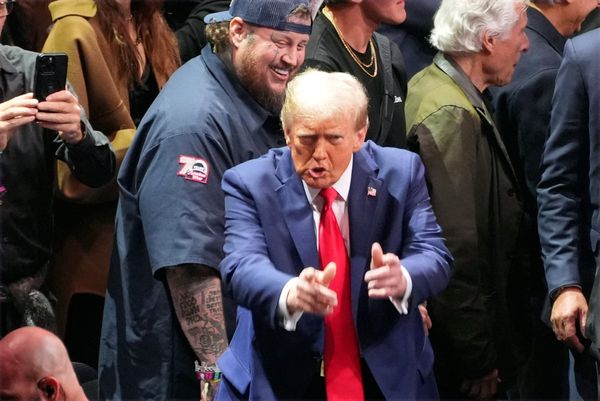
Anthony Albanese broke free from COVID-induced isolation this morning, returning to front a Labor campaign that hasn’t changed much in his week off the hustings. Labor should so far be relieved and satisfied with how it’s fared in his absence.
Albanese’s positive test, war-gamed in the backrooms for months, was met with headlines about a potential campaign disaster. Instead, in a week punctuated by another holiday long weekend, it’s allowed leading frontbenchers like Jason Clare and Jim Chalmers to sharpen their prospective ministerial chops and broaden their recognition among the electorate.
The opposition has also been aided by a wrecking ball hurled at the Coalition campaign in the shape of record inflation, and the prospect of a mid-campaign interest rate rise to come next Tuesday. That poses a major challenge to the Coalition’s preferred narrative of “superior economic managers”. Albanese’s opening-day gaffe on unemployment now seems far enough in the rearview mirror for Labor to breathe a bit easier.
But the real challenge for Labor wasn’t Albanese’s isolation, but managing his return. Election campaigns are bruising enough without residual fatigue and brain fog to grapple with. He needs to strike a balance between roaring back onto the hustings and not wearing himself down, given we’re only just hitting the halfway mark.
The opposition leader began tentatively this morning, marking his return with a “made for social media” dog walk in his home suburb of Marrickville, followed by a flurry of breakfast television interviews in the open air. Later today, he’ll travel to Perth, where Labor will hold its campaign launch Sunday.
Launches aren’t the affairs they once were. But Sunday’s will set the tone for where Labor’s focus will be for the final weeks. It’s also a huge statement of WA’s importance to Albanese. In a state where federal Labor has struggled for decades, the opposition hopes to win up to three seats, in part on the back of Premier Mark McGowan’s huge dominance.
“If it was going to happen, the timing whereby I’m out a couple of days before our campaign launch is really the sweet spot,” Albanese said on Nine’s Today program, before acknowledging doctors’ orders about taking it easy when he got tired.
The Coalition is also clearly aware that Albanese could be very mildly vulnerable on his return. If anything, it’s because a loss of credibility on two of their perceived strengths — national security and economic management — has forced the government to double down on its “find whatever shit sticks” strategy.
Yesterday, Morrison quipped that Albanese hadn’t been as busy during COVID isolation as he had been.
“He’s had a pretty quiet week. I remember when I was in iso I had a very busy week attending Quad summits and doing all those sorts of things,” the prime minister said.
By our count, Albanese had eight media appearances across TV and radio while isolating. Morrison had four appearances, as well as two virtual addresses with Q&A sessions attached. Let’s call this one a draw, fellas. It still didn’t stop Chalmers facing questions from reporters about why Albanese didn’t front this morning’s press conference.
The government also hopes to get Albanese on the debate stage and in front of the country as soon as possible. Yesterday, the two campaigns continued to bicker over election debates. The Morrison team wants two more — on Seven and Nine — to run next week. Campaign director Andrew Hirst responded to Labor’s proposal for a final-week debate hosted at the National Press Club by pointing to its offer for two commercial TV showdowns next week.
The Labor campaign is reluctant to commit to anything while Albanese recovers. Morrison hopes a COVID-wearied Albanese has a repeat of his opening-day gaffe, which was crucial in shaping the conventional narrative about the campaign’s early stages.
For a government that has seen some of the big issues turn against it, this would be another undeserved gift.







